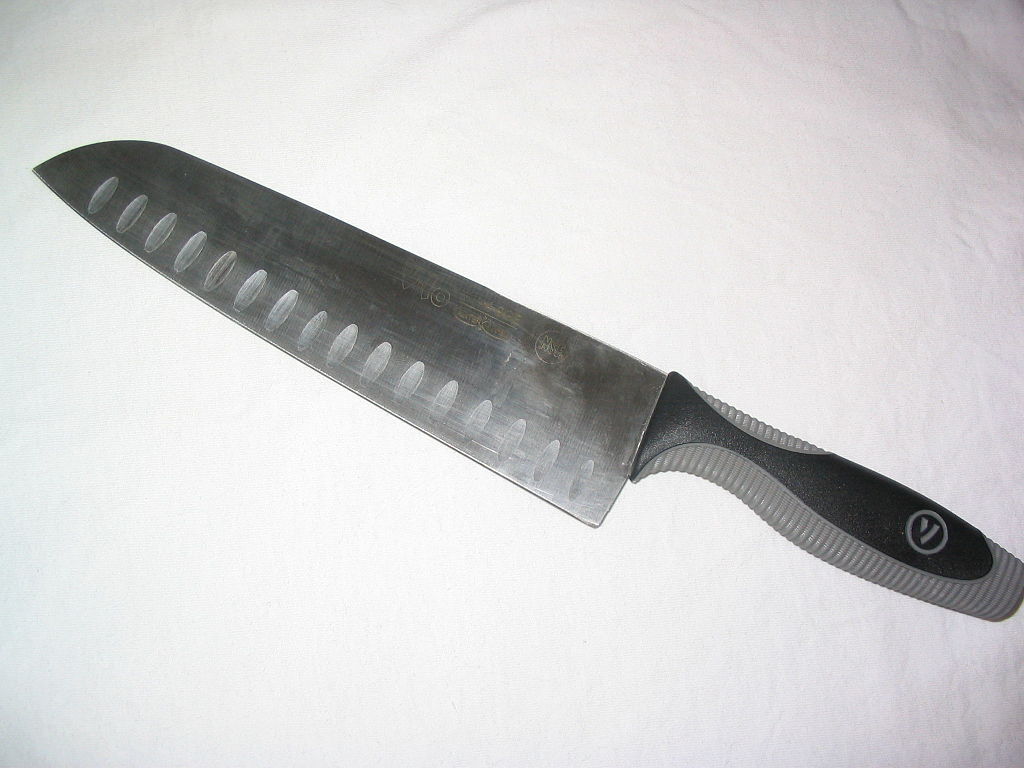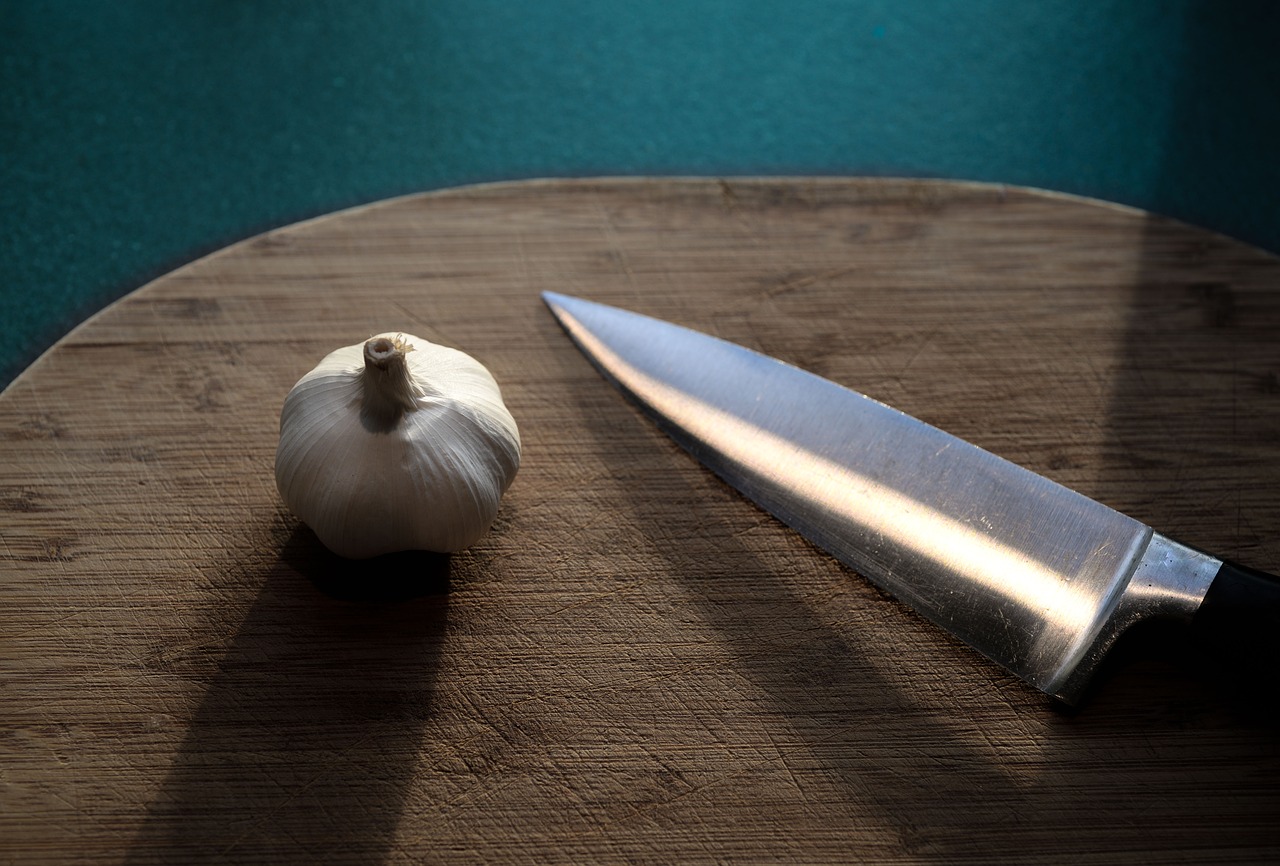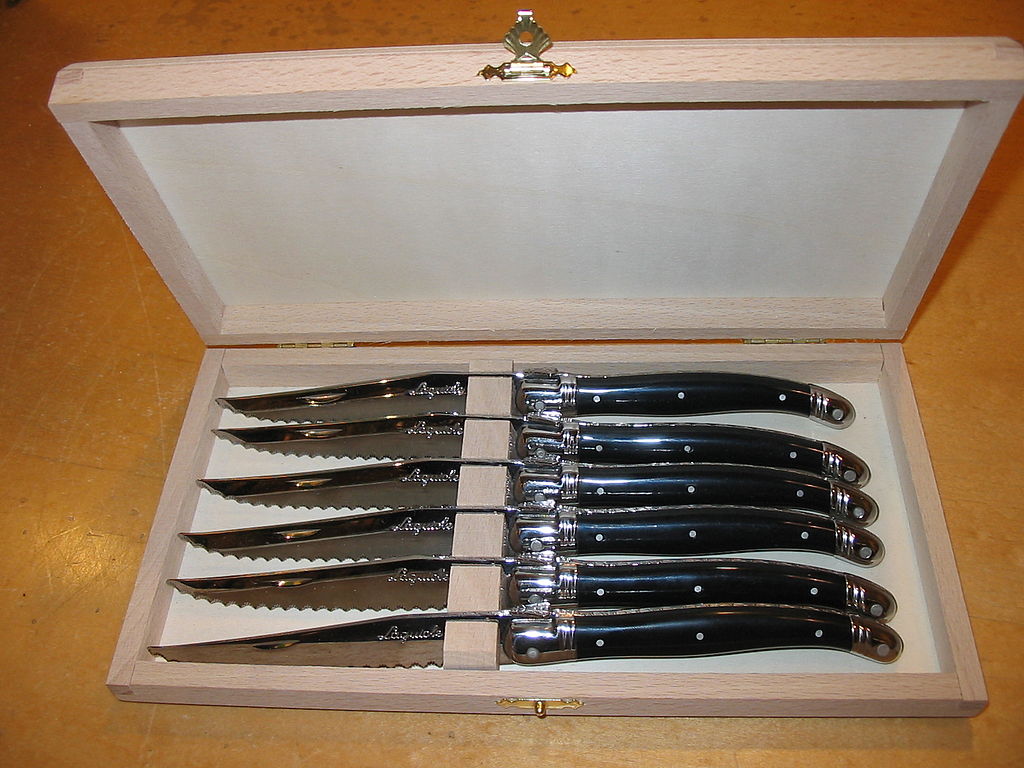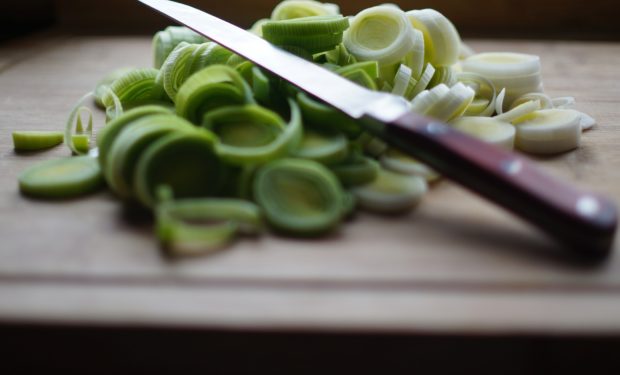If you are an avid kitchen enthusiast and want to take it to the next level, it is essential to familiarize yourself with all the knife types and their uses. Knowing the difference between a Chef Knife and a Santoku, how to spot the perfect carving knife by analyzing its design, or how to neatly portion the meat with a boning knife draws the line between a hobbyist and a pro. Without further ado, here are five knives every cook needs to become a pro.
Santoku Knife
 (Source: Wikimedia Commons)
(Source: Wikimedia Commons)
If the chef knife is a jack-of-all-trades type tool that tries to be good at everything, the Santoku is his older, more experienced uncle who excels at specific tasks. In essence, it is a standard knife that can be used at dicing, mincing and slicing, but it features a little bonus. Due to its flat, straight blade, similar to the sheep’s foot paring knife, julienning can be done with relative ease.
The Santoku should be an essential part of your knife collection if you want to be more than a cooking hobbyist. In fact, the Santoku WU416 is considered to be one of the best chef knives in 2018 by specialized websites such as ChefKnives.Expert.
Chef Knife

(Source: Pixabay)
The cooking knife, popularly known as chef’s knife, is the perfect starting knife if you want to take your cooking activities to the next level. Originally designed solely for slicing and disjointing large pieces of beef, today is the most common kitchen tool in households. Jamie Oliver himself considers the chef knife a absolute must have.
Despite its professional sounding name, it has a balanced learning curve. It is easy to use for kitchen amateurs, but hard to master and use it as it was meant. A good chef knife is 20 centimeters in length and about 3.8 to 4 centimeters in width. Therefore, you could consider it a jack-of-all-trades type of knife because you can use it for any kitchen task, from chopping legumes to slicing meat to mincing. From a technique standpoint, it is also very fun to use, because its design allows for satisfying sessions of tap chopping.
Slicing Knife

(Source: Pixabay)
Similar to bread knives when it comes to the height and length of the blades, they serve totally different purposes. The main difference between them is the slicing knife’s tip, which is pointy like a spear.
This knife’s main function is related to portioning. If you are serving a big table and want neatly portioned slices of meat, the slicing knife is the perfect choice. It is good for almost any type of cooked meat, ranging from a roast to ham to chicken and turkey.
Paring Knives
Paring knives have two perks right from the get-go: they are short and very easy to maneuver. There are three types of paring knives: bird’s beak, sheep’s foot and spear tip, each suited for a certain specific task involving the preparation of vegetables.
The bird beak variant is best used for peeling vegetables, the pointy one for slicing and the sheep’s foot for julienning. Its design allows total maneuverability and control, allowing you do any task in a time-efficient manner. Moreover, the paring knife is great if you are a fan of cutting the vegetables in intricate shapes or just want perfectly portioned pieces. You can also cut vents and patterns into dough with it.
Steak Knives

(photo by Tim Chambers via Wikimedia Commons)
Steak knives usually feature a 12-centimeter long blade, with solid, thick handles meant to offer total control and stability to the user. Steak knives come in different variants, but most of them have either straight or serrated blades, with pointy or rounded tips. They are usually sold in sets of four to eight.
Either way, they are designed to cut neatly through thick slabs of steak. Since portioning is very important when serving large groups of people, the shape of the blade allows just that. Unlike the standard steak knives popular prior to World War II, modern steak knives can last up to 30 years without needing too much maintenance work. They are practical, feasible, and an essential addition to your collection if you want your steak not only to taste delicious but look good on the table as well.
Conclusion
Familiarizing yourself with different types of kitchen knives and owning them are two essential steps you must take if you want to improve not only your cooking but how good the final result actually looks once you place the food on the table. Some knives, like the chef variants, are designed to appeal to a broader variety of kitchen enthusiasts while the santoku, slicing, and steak knives require a little bit of patience and technique improvements to use them properly and finally master them. Make sure to read this guide if you want to take it to the next level.
